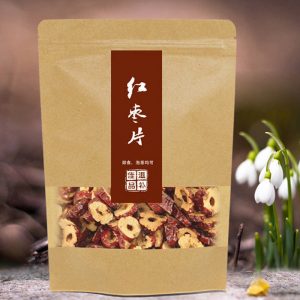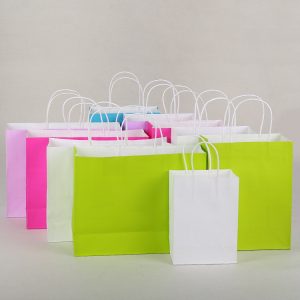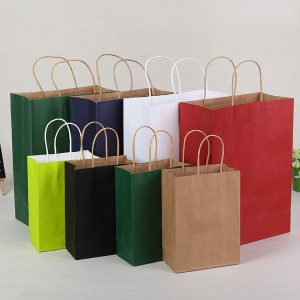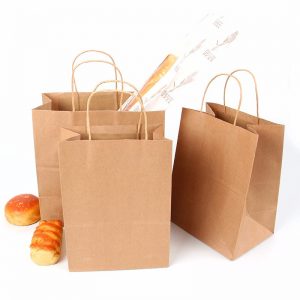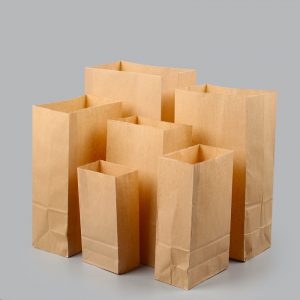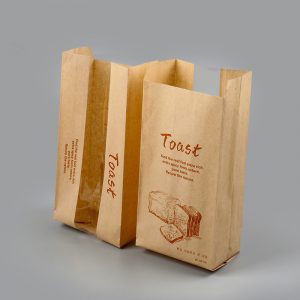Industry news
Shopping bags, as the name implies, are the bags used for shopping. Currently, the shopping bags available on the market mainly include: plastic shopping bags, non-woven shopping bags, paper shopping bags, cotton and linen shopping bags, and the like. In today's society, the pursuit of low-carbon and low-pollution lifestyles, as the population increases, the demand for shopping bags is also increasing. In view of the large amount of pollution, eco-friendly shopping bags have been launched.
plastic
The plastic shopping bag is a packaging material made of polyolefin as a main raw material and appropriately added with other substances. The polyolefins used are mainly polyethylene (PE), commonly known as soft rubber. The main products include low density polyethylene or high pressure polyethylene (LDPE), high density polyethylene or low pressure polyethylene (HDPE), linear low density polyethylene ( LLDPE) and metallocene polyethylene (mLLDPE) are four major categories. In order to reduce their cost, most companies add about 30% calcium carbonate to make plastic shopping bags. These plastic shopping bags do not emit toxic gases when they are burned in the garbage dump. The national plastic shopping bag standard that has just been introduced divides plastic shopping bags into the following three categories:
Ordinary plastic shopping bags - using polyolefins and fillers as raw materials, such plastic shopping bags do not have degradation properties, and will not degrade in the wild. These plastic shopping bags have excellent recyclability and can be recycled many times. The performance of recycled materials is slightly reduced, but it can be used for shopping bags or garbage bags with low performance requirements and less stringent color requirements. The key question is whether the problem can be recovered.
Starch-based plastic shopping bags - These shopping bags use modified starch as the main raw material, and appropriately add a small amount of other degradable materials to improve their performance. The plastic shopping bag can be naturally degraded after being discarded in the field.
Degradable Plastic Shopping Bags - These shopping bags are made from fully degradable plastics with complete degradation properties. The product can be completely degraded into small molecular microorganisms in the wild without any environmental pollution. Foreign plastic shopping bags are promoted abroad. According to the specific composition of fully degradable plastics, they can be divided into the following three categories:
(1) PLA and PHA biodegradable plastics synthesized by bio-fermentation using natural starch as raw materials consume a large amount of food, so the development space is limited.
(2) An aliphatic polycarbonate (APC)-based degradable plastic synthesized from carbon dioxide, which uses the industrial by-product carbon dioxide that is being screamed by everyone as a raw material, which does not consume food and reduces the amount of carbide emissions. Eliminating the global warming caused by greenhouse gases, and killing two birds with one stone, the market prospect is broad.
(3) The complete degradation product of non-starch degrading agent added to ordinary plastics is in the stage of industrialization, such as reliable degradation performance, and has a promising future.
Non-woven fabric
Non-woven shopping bags are non-woven fabrics made of plastic. Many people think that cloth is a natural material, which is actually a misunderstanding. Commonly used non-woven raw materials are polypropylene (referred to as PP, commonly known as polypropylene) or polyethylene terephthalate (referred to as PET, commonly known as polyester), especially PP is the same as PE used in plastic shopping bags. The five general-purpose plastic varieties belong to plastics that cannot be degraded after 50 years. For example, ordinary non-woven shopping bags, which we all call environmentally-friendly shopping bags, are made of polypropylene fiber through special processes. In essence, polypropylene (PP) is a typical type of plastic, and it is also a plastic bag, so it is environmentally friendly. Like ordinary plastic shopping bags, they are not completely degraded. In terms of specific cost performance, the non-woven fabric bag under the same conditions is not as strong as a plastic bag, and is not waterproof, and its price is several times higher than that of the plastic bag. It should be mentioned that the non-woven shopping bags made of more than two kinds of materials are more difficult to recycle and reuse than ordinary plastic shopping bags.
Paper
Everyone knows that the strength and water resistance of paper are not good. Many water-based products such as seafood cannot be packaged, and heavier metal products are also difficult to bear. First of all, the raw materials for making paper are mainly wood, and the world's forest resources are extremely scarce. This is the biggest waste of environmental resources. Secondly, the process of making paper will produce a lot of water pollution. Paper mills across the country, such as street mice, are beaten everywhere. Therefore, the large amount of paper bags is the biggest waste of environmental resources and the greatest pollution to the environment.
Cotton and linen
Cotton and linen shopping bags are stronger than paper bags and can be recycled many times, but the water resistance is not good. The advantage of cotton and linen shopping bags is that they can be recycled, but what if the bags are dirty? Washing with water is the most common method, but washing with water is a waste of water. Phosphorus-containing washing powder contaminates the soil, and ordinary washing does not kill bacteria.
-
0609-22
How do white spots on kraft paper come about?
In the production and printing of kraft paper, the common paper diseases of kraft paper are: vitiligo. Color difference, poor evenness, poor gloss, creases, black spots, wet scars, etc. Today, sincec…
-
0609-22
Common types and uses of white kraft paper
White kraft paper is one of the most used types of kraft paper. In terms of color, white kraft paper on both sides is called white kraft paper, yellow kraft paper on both sides is yellow kraft paper,…
-
0601-22
How to print white characters on kraft paper
Because the natural color of kraft paper has its own color, the fonts may not be displayed or clear during printing, and the fibers of kraft paper are more up and rough, the surface of the paper is n…
-
0601-22
Why is kraft paper so popular?
There are thousands of products on the market today for packaging goods, but why is kraft paper always preferred over other packaging materials? It is certainly no coincidence that they are so popula…
-
0526-22
Unique storage box made of kraft paper
Kraft paper packaging has been very popular in the market in recent years, and kraft paper products have also been favored by many people in the market. Some young people who like to be independent a…
-
0526-22
Frequently Asked Questions About Kraft Paper
1. What is kraft paper made of? Kraft paper is a paper made of cellulose fibers, treated with sodium sulfate Na2SO4 salt, and does not require sulfuric acid bleaching. This type of paper can be made…
-
0525-22
5 facts you need to know about kraft paper packaging
Now we can see kraft paper packaging everywhere: bread bags, fashion bags, melon seeds packaging, etc. Kraft paper packaging has gradually become the first choice for many businesses. The vast majori…
-
0525-22
Which is more environmentally friendly, kraft paper bags or plastic bags, and why?
In the face of the current serious environmental pollution, the use of environmentally friendly paper bags is a sustainable packaging solution that can bring protection to the surrounding environment…
-
0524-22
Introduction of half-wood pulp kraft paper
Most kraft paper maintains its natural yellow-brown color, giving people a simple and elegant feeling. Because of its natural environmental protection, it is widely used in the packaging industry, es…
-
0524-22
Features and Benefits of Kraft Paper Bags
With the acceleration of social and economic development, many environmental problems will appear. Consumers are gradually reducing the use of plastic bags and adopting more environmentally friendly …


